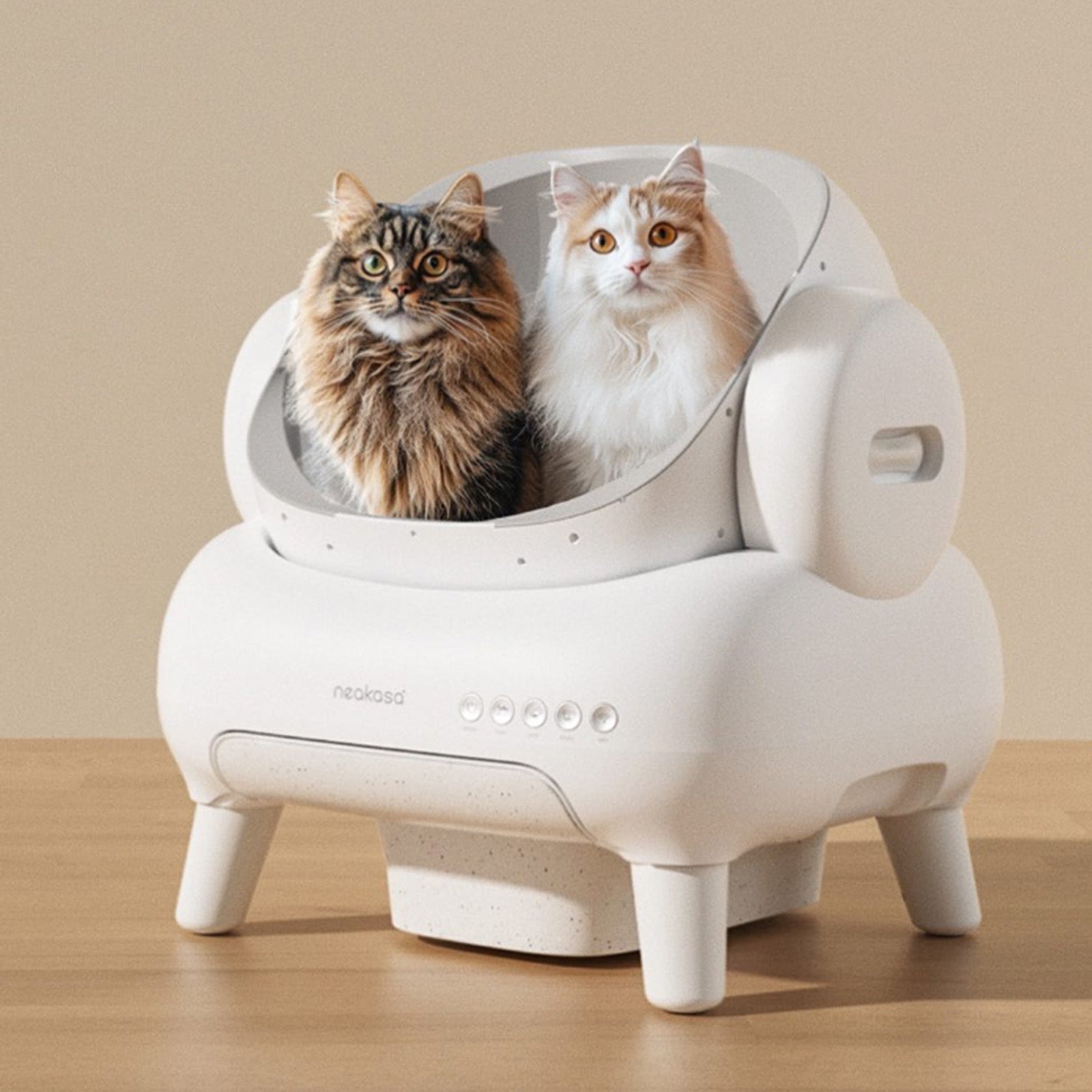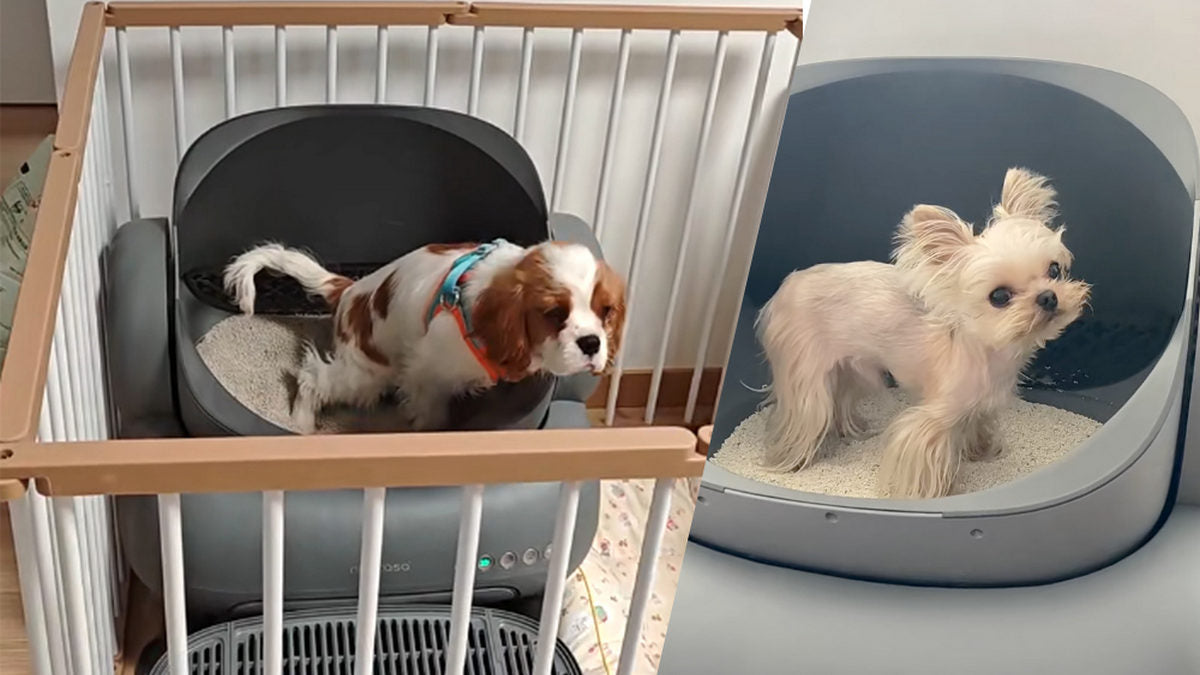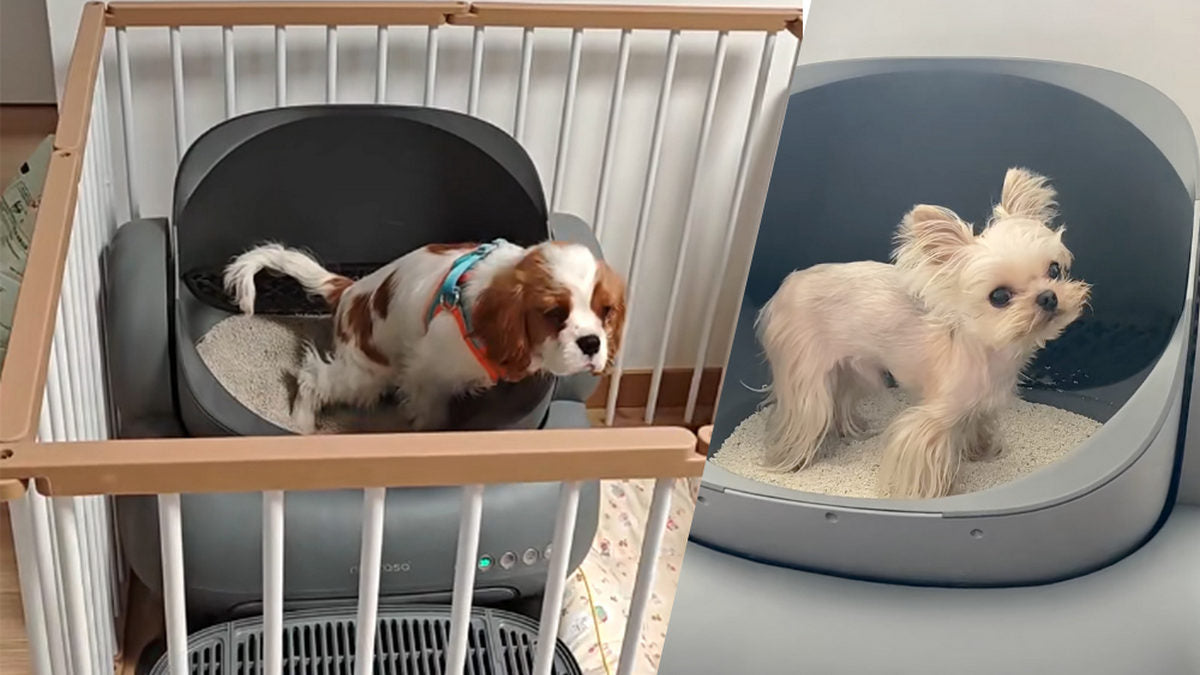Do you hate going out in the freezing cold at 6 AM just to walk your dog? Does it stress you out when it’s pouring rain and you still have to convince your dog to go outside? Or maybe you live in a tall apartment building, and every quick bathroom trip turns into a long elevator ride?
If any of that sounds familiar, you’re definitely not the only one. A lot of dog owners deal with the same daily struggles. It can make taking your dog out feel like a real chore for both you and your pup.
Most dogs are used to going potty outside. But with some training and patience, many can actually learn to use an indoor litter box. And it’s not just for emergencies. A dog litter box can be a clean, easy, and helpful way to give you and your dog a little more comfort and freedom every day.
This guide will help you with litter box training a dog in simple steps. With the right tools, some patience, and positive vibes, your dog can learn fast. Just take it slow and stay consistent!

Preparing for Success: Setting the Foundation
🔺 Choosing the Right Litter Box
The Neakasa litter box offers several features that make it ideal for canine use:
- Spacious design that accommodates small dog sizes
- Low entry threshold with a step for easy access, especially for smaller or older dogs
- Durable, non-toxic materials that withstand scratching and digging
- Easy-to-clean surfaces that don't absorb odors
These thoughtful design elements address the specific needs of dogs, making the training process much more intuitive.
🔺 Essential Training Supplies
Before you begin training, gather these helpful items:
- Potty-training spray with attractant scents
- High-value treats your dog absolutely loves
- Leash for guided introductions
- Pet-safe cleaning supplies and odor eliminators
- Patience (your most important tool!)
🔺 Creating a Positive Training Environment
Select a quiet, easily accessible location for the litter box that:
- Is away from your dog's eating area
- Provides some privacy but remains visible
- Has easy-to-clean flooring around it
- Maintains a consistent location (don't move it during training)
Litter Box Training a Dog: Pros & Cons
Before starting, it’s good to know the ups and downs of litter box training a dog. This helps you decide if it’s right for your situation.
🙂 Pros
- Weather-Friendly: No more walking in rain, snow, or extreme heat. Great for areas with tough weather.
- Super Convenient: Good for busy schedules, late nights, people with limited mobility, or high-rise living.
- Health & Hygiene: Lets you spot health issues early and lowers the risk of outdoor parasites.
- Good for Puppies & Seniors: Helps dogs who need to go often or can’t always make it outside.
- Eco-Friendly: Less plastic bag use and better waste control.
🙃 Cons
- Takes Patience: Training isn’t instant. Adult dogs may take longer to learn.
- Space & Cleaning: Needs a clean spot in your home and regular upkeep.
- Not for Every Dog: Works best for small or medium dogs. Larger breeds may need special boxes.
- Less Outdoor Time: Dogs still need walks and play for exercise and social time.
Overall, litter box training a dog has a lot of benefits, especially with a smart setup like the Neakasa litter box. Most of the tough parts can be handled with good training and the right tools. We’ll show you how in the next steps!
Step-by-Step Training Dog To Use a Litter Box
Step 1️⃣: Introducing the Neakasa Litter Box
Start by simply allowing your dog to investigate the new object:
- Place the Neakasa litter box in your chosen location
- Let your dog approach and sniff it naturally without pressure
- Scatter a few treats around and inside the box to create positive associations
- Praise any interest your dog shows in the box
This initial phase is all about creating curiosity and positive feelings about this new item in their environment.
Step 2️⃣: Guiding Entry and Scent Association
Once your dog seems comfortable around the box:
- Watch for your dog's natural potty cues (circling, sniffing, restlessness)
- Gently lead them to the litter box using a leash during these times
- Apply potty-training spray to the litter to attract their interest
- Reward them with praise and treats just for stepping into the box
- Use consistent command words like "go potty" each time
Remember, even standing in the box is progress at this stage!
Step 3️⃣: Establishing a Bathroom Routine
When your dog successfully uses the litter box:
- Immediately reward with enthusiastic praise and high-value treats
- Initially, you might place a small amount of your dog's waste in the box to help them understand its purpose
- Maintain a consistent schedule for meals and potty breaks to help establish a routine
- Gradually increase the time between outdoor walks as indoor success improves
The key here is immediate positive reinforcement—your excitement shows them they've done something wonderful!
Step 4️⃣: Managing Accidents and Reinforcing Habits
During the learning process:
- If accidents happen, clean them without scolding your dog
- Use enzymatic cleaners to completely remove odors from accident spots
- Continue rewarding successful litter box use, even after the habit seems established
- Gradually reduce the use of attractant sprays and leash guidance as your dog becomes more confident
Consistency is crucial during this phase—keep the routine predictable and the rewards flowing.
Step 5️⃣: Daily Maintenance and Cleaning
The Neakasa litter box makes maintenance simple:
- Remove waste promptly to maintain hygiene and encourage continued use
- Clean the box thoroughly according to Neakasa's recommendations
- Replace litter as needed to keep the environment fresh and inviting
- Monitor your dog's bathroom habits for any changes that might indicate health issues
Common Questions About Litter Box Training A Dog
❓: How long does it take to litter train a dog?
✔️: Most dogs begin to understand within 1-2 weeks, but complete reliability might take 4-8 weeks. Remember that dogs learn at their own pace—puppies often learn faster than adults, but any dog can succeed with consistent training.
❓: Is litter box training a dog a good idea?
✔️: Yes, especially for small to medium dogs in apartments or bad weather. It’s a convenient option if done with proper training.
❓: What dogs are best for litter box training?
✔️: Small breeds like Yorkies, Chihuahuas, and Shih Tzus tend to do best. It’s harder for large dogs unless using a specially sized box.
❓: What if my dog refuses to enter the litter box?
✔️: Try these approaches:
- Place the box where your dog has had accidents before
- Use stronger attractant sprays
- Place a favorite toy nearby
- Try different litter textures (some dogs prefer specific sensations)
- Make the entry even more gradual by rewarding proximity before expecting entry
Conclusion: A New Level of Convenience
Training your dog to use a Neakasa litter box opens up a world of convenience and comfort for both of you. No more rushed bathroom breaks in terrible weather or anxiety about your dog's comfort when you're running late.
Remember that success comes through patience, consistency, and positive reinforcement. Every small step deserves celebration, and setbacks are just part of the learning process.
The Neakasa litter box makes this journey easier with its thoughtful design features that accommodate your dog's natural instincts and behaviors. By investing time in training now, you're creating a lasting solution that will benefit your household for years to come.
Have you tried indoor potty training with your dog? Or do you have questions about getting started? Share your experiences or concerns in the comments below—we'd love to hear from you and provide any additional guidance you might need!









Leave a comment
This site is protected by hCaptcha and the hCaptcha Privacy Policy and Terms of Service apply.